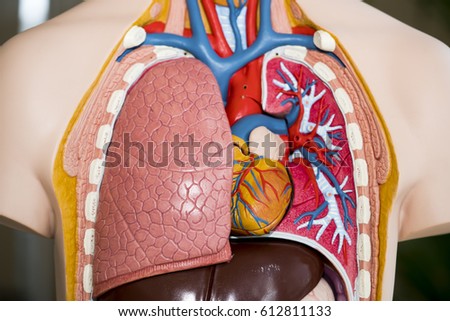The spleen is an important organ in the immune system. It is a bean shaped structure, located in the left upper portion of the abdominal cavity, under the diaphragm, protected by the 9th through 11th ribs, in the mid-back. The spleen typically weighs 150 grams (5.3 oz) in a typical adult and spans about 11 cm (4.3 inches) vertically in its longest dimension.
The functions of the spleen normally include clearance of invading organisms in the blood (bacteria) from the circulation, production of antibodies for the immune system, and removal of abnormal blood cells.
The spleen can enlarge by performing its normal functions in response to another medical condition. Certain infections, diseases affecting blood cells, increased splenic blood flow, and diseases invading the spleen are some common reasons for the spleen to enlarge. Splenomegaly is not always abnormal, and spleen size may not necessarily say much about its function.
A normal-sized spleen cannot be palpated (felt) during the physical examination of the abdomen, except in slender people. Enlarged spleen (splenomegaly) may be easier to palpate during careful abdominal examination. A small percentage of the normal American population may have a palpable or enlarged spleen.
A spleen weighing up to 500 grams (1.1 pounds) or between 11 to 20 cm (4.3 to 8 inches) in its longest dimension is considered enlarged. Splenomegaly greater than 1000 gm (2 lb 3.3 oz) or longer than 20 cm (8 inches) is considered severe or massive.

Picture of the spleen
Enlarged Spleen Causes:
The causes of splenomegaly vary widely and range from malignancy (cancers), infections, congestion (increased blood flow), infiltration of the spleen from other diseases, inflammatory conditions, and blood cell diseases.
Some of the most common causes of an enlarged spleen include the following:
- liver disease (cirrhosis due to chronic hepatitis B, chronic hepatitis C, fatty liver, long standing alcohol abuse);
- blood cancers (lymphoma, leukemia, myelofibrosis);
- infections (mononucleosis, bacterial endocarditis, malaria, AIDS, mycobacterium, leishmania);
- abnormal blood flow and congestion (splenic vein thrombosis, portal vein obstruction, congestive heart failure);
- Gaucher disease (a lipid storage disease);
- blood cell disorders (sickle cell anemia, thalassemia, spherocytosis);
- Inflammatory disease (lupus, rheumatoid arthritis);
- idiopathic thrombocytopenic purpura (ITP); and
- polycythemia vera.
Enlarged Spleen Symptoms
Splenomegaly does not have any specific symptoms. Vague abdominal painand bloating are the most common, but still nonspecific, symptoms of an enlarged spleen. Some individuals with a very enlarged spleen may complain of early satiety (anorexia) and gastric reflux symptoms because of the stomach displacement and pressure on the stomach as a result of the enlarged spleen.
Otherwise, many symptoms associated with enlarged spleen are related to the underlying cause of the enlargement. These may include:
- fever,
- night sweats,
- paleness (pallor),
- generalized weakness,
- fatigue,
- easy bruising, and
- weight loss.
When to Seek Medical Care for Splenomegaly
Generally, people with splenomegaly may be cared for by the physician who is managing the underlying cause. For example, hematologists (doctors who specialize in treating blood disorders), oncologists (cancer specialists), and gastroenterologists (liver and digestive tract specialists) all commonly take care of patients who may have enlarged spleen as a response to another condition.
Depending on the cause, individuals with splenomegaly may seek urgent doctor visits if they have evidence of bleeding, infection that is not well controlled at home, or severe abdominal pain.
Enlarged Spleen Medical Treatment
The treatment of splenomegaly essentially depends on the cause of it.
In many conditions, the spleen enlarges a result of performing its normal physiologic function in response to another medical condition, for example, cirrhosis. The main objective is then not necessarily to improve splenomegaly that is a consequence of the disease, but to treat the underlying cause, such as cirrhosis.
In many other situations, such as infections, lymphomas, or leukemias, again the treatment is directed towards the underlying disorder, using antibiotics or chemotherapy.
Surgery for Enlarged Spleen
Occasionally, the indicated treatment is surgical removal of the spleen (splenectomy) in order to control the causative conditions. Some conditions in which splenectomy may be considered are hairy cell leukemia, thalassemia major, splenic vein thrombosis, Gaucher disease, and ITP. A careful consideration of risks versus benefits of surgery is the most prudent approach.
It is important to note the importance of vaccination in cases of splenectomy. People without a spleen (asplenia) are at a high risk for significant infections with Streptococcus pneumoniae, Neisseria meningitidis, and Hemophilus influenzae. Therefore, vaccination against these bacteria (pneumococcal vaccine, meningococcal vaccine, hemophilus vaccine) is strongly recommended in anyone who undergoes splenectomy.


![[Distressed young man]](https://cdn1.medicalnewstoday.com/content/images/articles/036/36942/distressed-young-man.jpg)